Revolutionizing the Garden Industry with Art: Part One
The Seed Industry Blossoms in America
Seventeenth and eighteenth-century America had established nurseries—George Fenwick’s in Connecticut in the 1640s, John Bartram’s in Philadelphia (approximately 1729) and Robert Prince’s on Long Island (1737)—that traded plants to and from Europe. The owners were accomplished botanists and plant collectors. They and their successors played a great role in horticulture and floriculture introductions and trends during the colonial period and even during the War of Independence, choosing, making available and distributing specimens and seeds for cultivation.
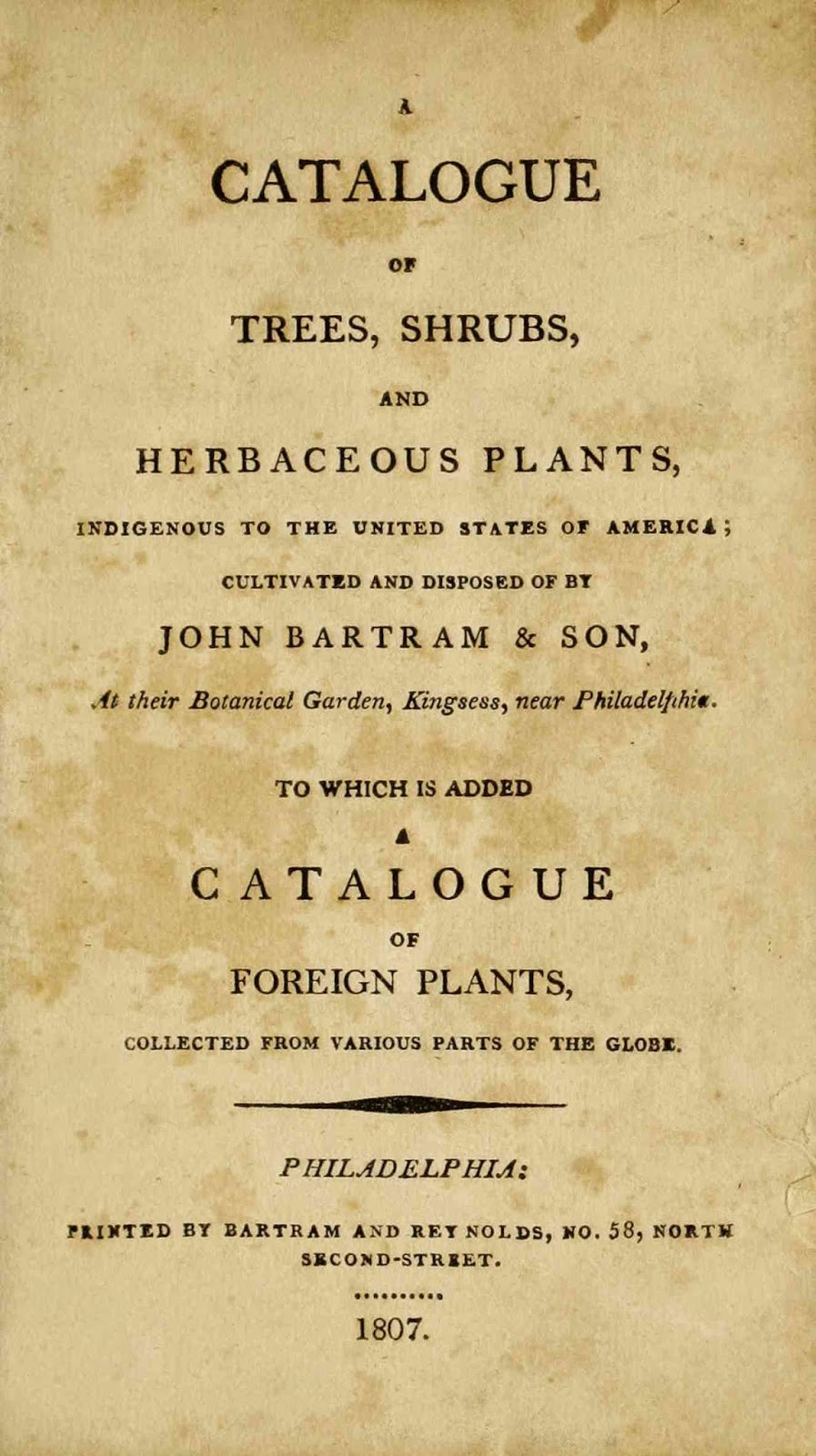 |
| John Bartram and Son. A catalogue of trees, shrubs and herbaceous plants, indigenous to the United States of America. 1807. http://biodiversitylibrary.org/page/44008602. |
George Washington ordered from Bartram’s 1784 catalog American Trees, Shrubs and Herbacious Plants for his gardens at Mount Vernon. Prince’s Nursery at Flushing Landing was spared by the British in the midst of battles of the Revolutionary War, and President Washington visited in 1790. The early nursery catalogs usually lacked illustrations and prices, indicating a knowledgeable clientele able to afford the wares.
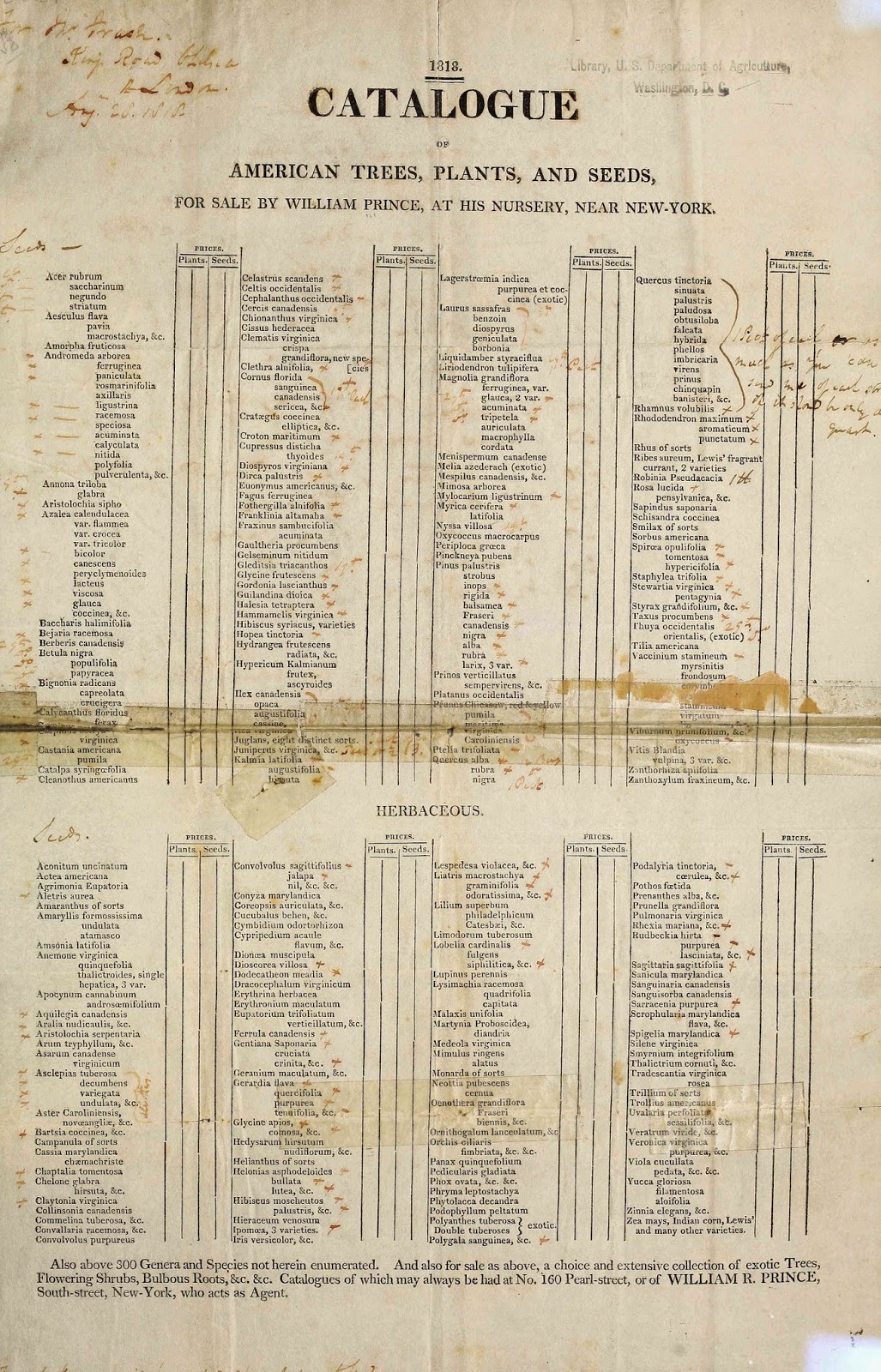 |
| Catalogue of American trees, plants, and seeds, for sale by William Prince, at his nursery, near New-York. 1818. http://biodiversitylibrary.org/page/42745739. |
During the nineteenth century in America gardens for pleasure, influenced by various botanical, industrial and cultural forces, became accessible to a wider audience, not just the wealthy. Gardening increasingly was not only a means for providing food and medicine but a way to enrich one’s life, to enjoy nature and contribute to the public good. Along with the creation of urban parks as the country became more industrialized, commercial nurseries also proliferated. There was a growing middle-class market for their goods of fruit-trees, shrubs, vegetables, flowers, and seeds. And where there were nursery stocks, there were illustrated advertisements to entice purchasers.
This was the time when Rochester, New York, became known as “The Flower City.” The temperate climate of Lake Ontario, the rich Genesee Valley (particularly for fruit trees) and the ease of transport, abetted with the creation of the Erie Canal in 1825 and the proliferation of railroads, all contributed to the region becoming an entrepreneurial center for horticulture. First, in 1830 William A. Reynolds and Michael Bateham, started their Rochester Seed Store. The nursery part of that business soon evolved into the Ellwanger and Barry Nursery Company. The two immigrants, George Ellwanger and Patrick Barry, issued the first catalog of the Mount Hope Botanic and Pomological Gardens in 1843. By 1871 they were the largest horticultural firm in the country with over 650 acres. Stock was shipped across the country and to Europe, Asia and Australia.
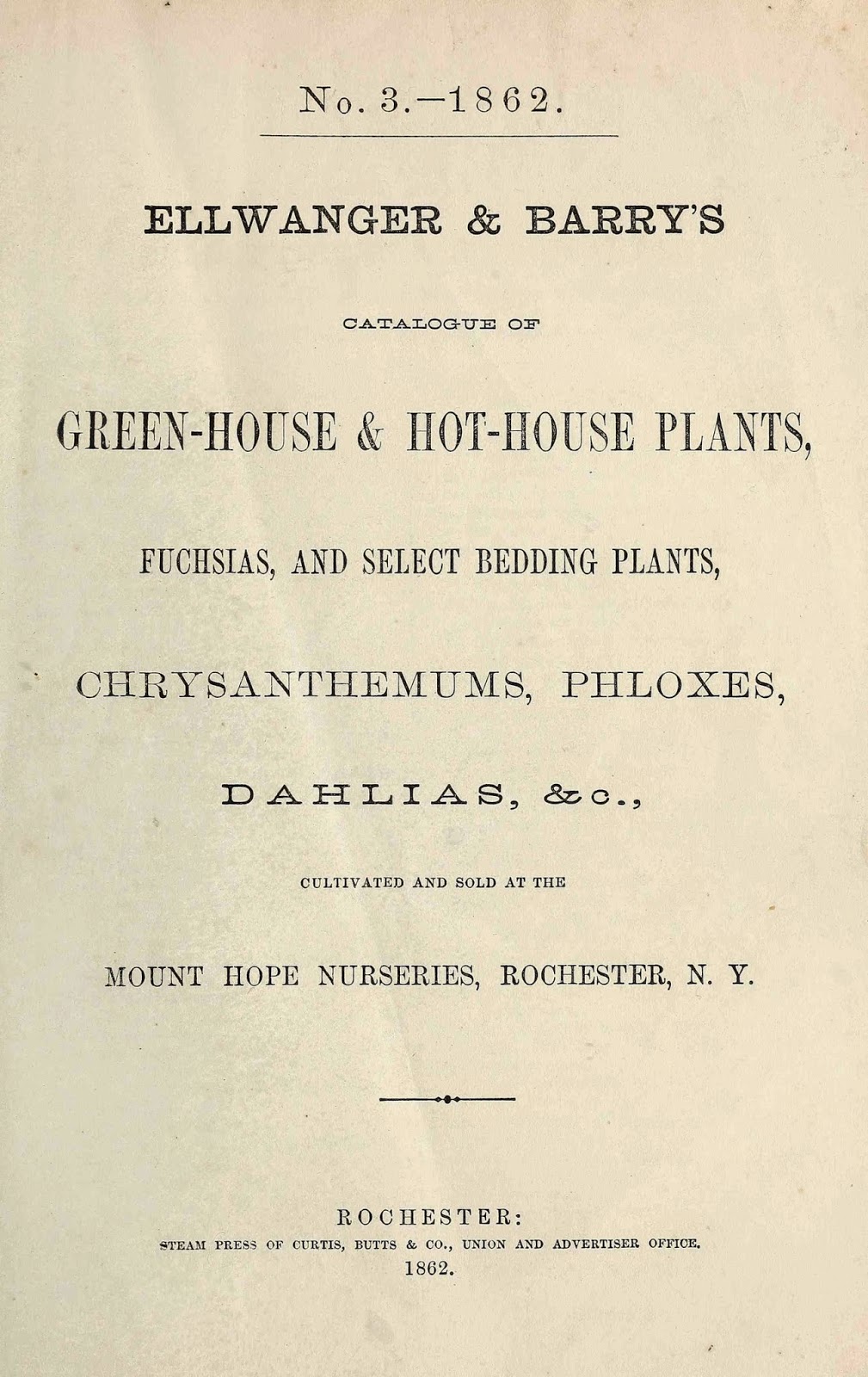 |
| Ellwanger and Barry’s catalogue of green-house and; hot-house plants, fuchsias, and select bedding plants, chrysanthemums, dahlias. 1862. http://biodiversitylibrary.org/page/42744851. |
The nursery man Patrick Barry’s horticultural treatises and inclusion of information in his own gardening catalogs helped educate his middle-class clientele in how to design and plant their own home landscapes. Barry’s writings led to involvement with the serial publications, the Genesee Farmer from 1844 and, following the early death of the enormously influential Andrew Jackson Downing, The Horticulturist in 1853. Barry also published The Fruit Garden in 1851 and for the American Pomological Society, he wrote in 1862 A Catalogue of Fruits (1868 revised edition in BHL).
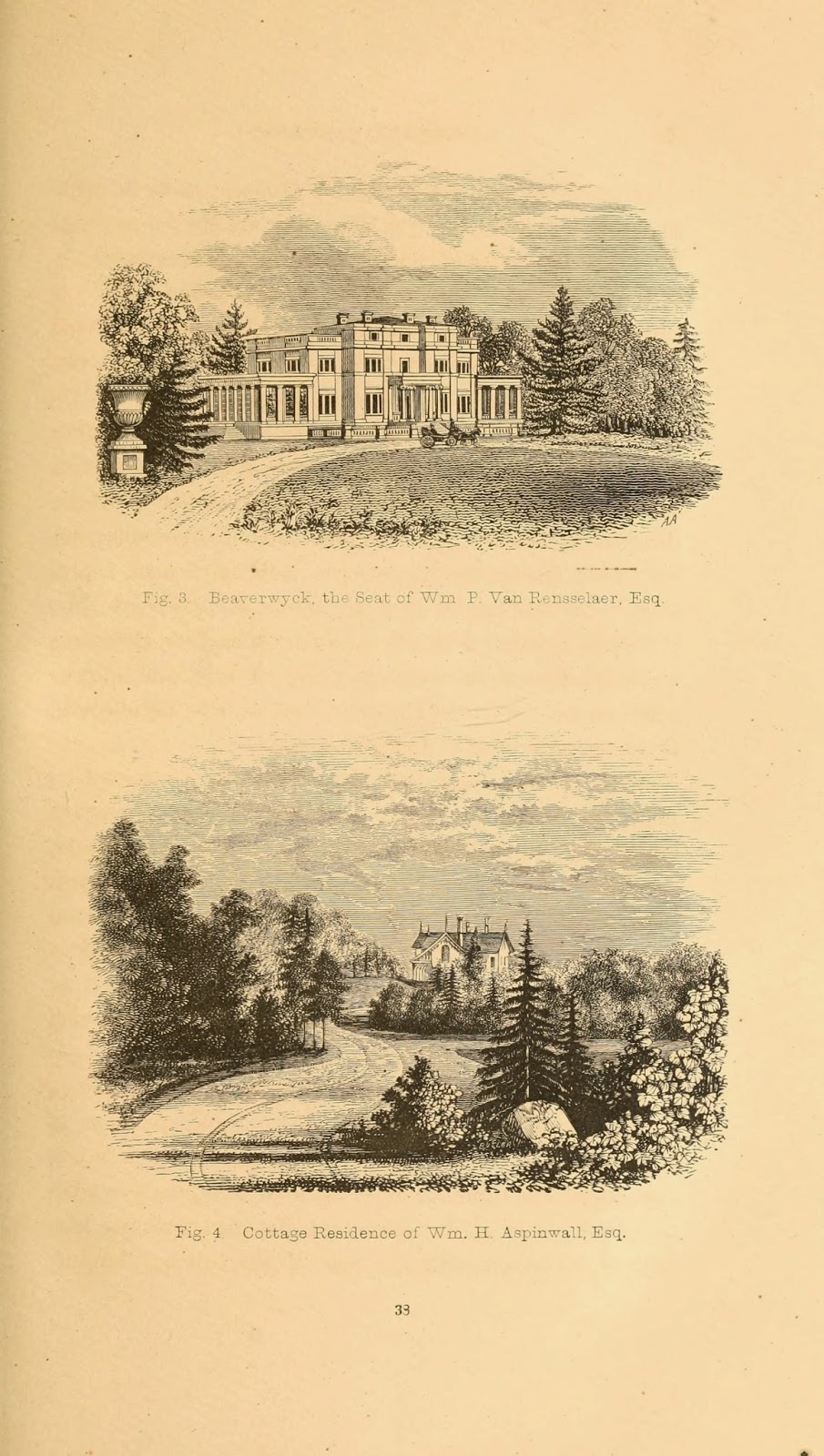 |
| Downing, A. J. A treatise on the theory and practice of landscape gardening (1844). http://biodiversitylibrary.org/page/16492842. |
Art Transforms the Seed Industry
Concurrently, before mid-century, illustrations—lithographs, engravings, woodcuts—were beginning to be put to use in nursery and seed catalogs. These printing techniques could not fully meet the demand of the rapidly expanding business as coloring by hand was time-consuming and expensive.
 |
| Ellwanger and Barry. Descriptive catalogue of ornamental trees, shrubs, roses, flowering plants. 1875. http://biodiversitylibrary.org/page/42767492. |
Chromolithography, also known as color lithography, was patented in 1837 by Franco-German lithographer Gottfried Engelmann. The process involves planographic or flat-surface printing on stones where the image is drawn with greasy ink or crayon in several different colors (the idea being that oil and water do not mix). This provides for eye-catching, vibrant and imaginative images produced by the thousands. Earlier methods of color reproduction had proved inadequate. Thus chromolithography became dominant in the second half of the nineteenth century for inexpensive decorative prints and for ephemera, such as postcards, cigar boxes, posters, and calendars.
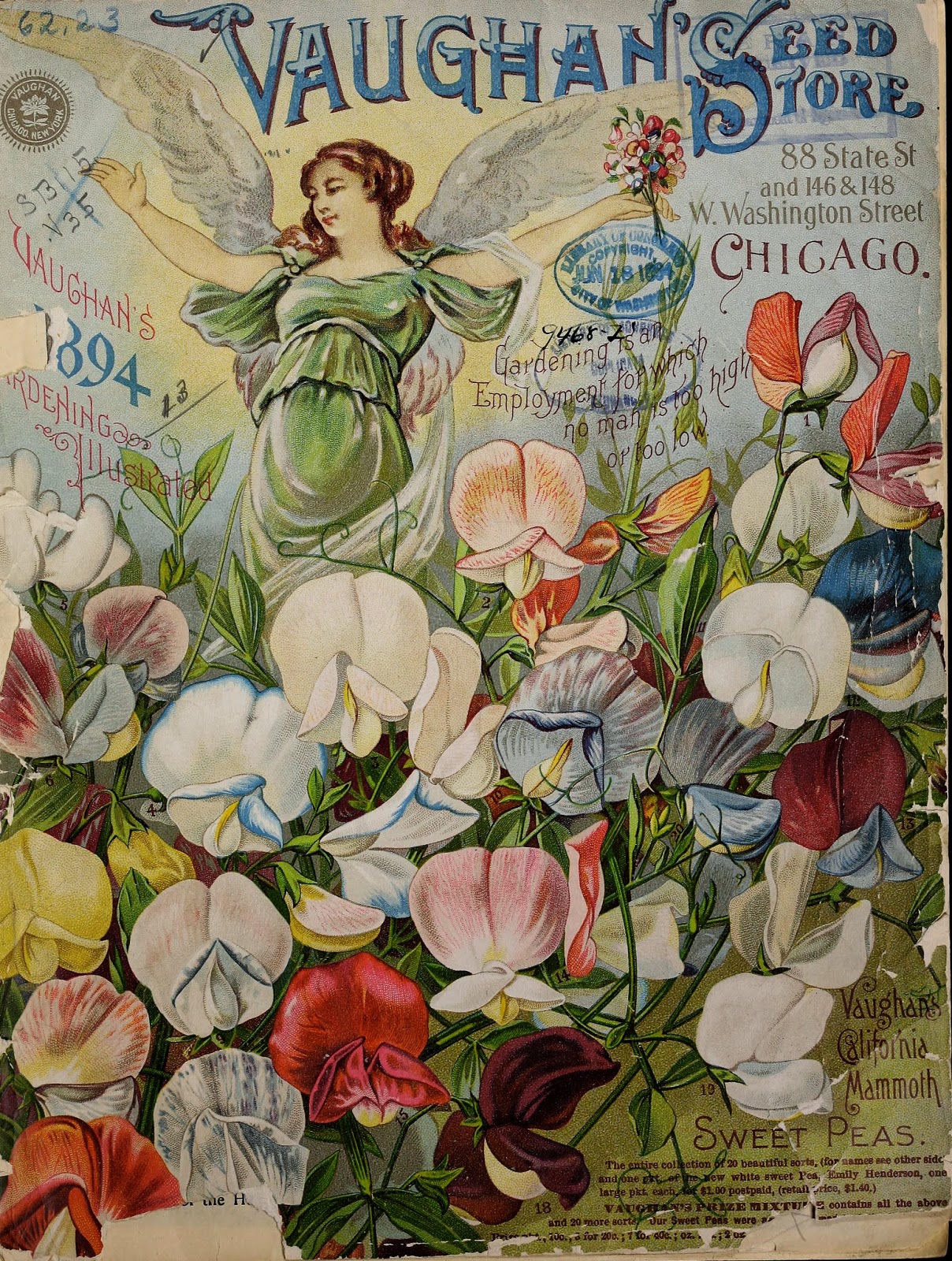 |
| Example of chromolithograph seed catalog cover. Vaughan’s 1894 gardening illustrated. http://biodiversitylibrary.org/page/44441215. |
The printmaking technique of chromolithography for advertisements, particularly with the advances in steam-driven production, was quickly put to great effect in the nursery industry in Rochester, where the greater number of firms were located. As a result, “the Flower City” became the center of horticultural publishing along with the garden firms. The first company solely devoted to chromolithography in Rochester was established in 1871. Production was not just for the widely distributed catalogs but also for seed packets and labels for boxes and trade cards and, eventually, horticultural periodicals. In addition, unique sample books for salesmen, composed of varying images of fruits and flowers, could be assembled for the trade, advertising the inventory of a business. One leading firm was Dellon Dewey. An example of one of the surviving works for agents of the company is in the Smithsonian Libraries’ Cullman Library (SB361 .D519 1872). While not many of these pieces of ephemera in the nursery trade still exist, the University of Delaware Libraries has nearly one hundred.
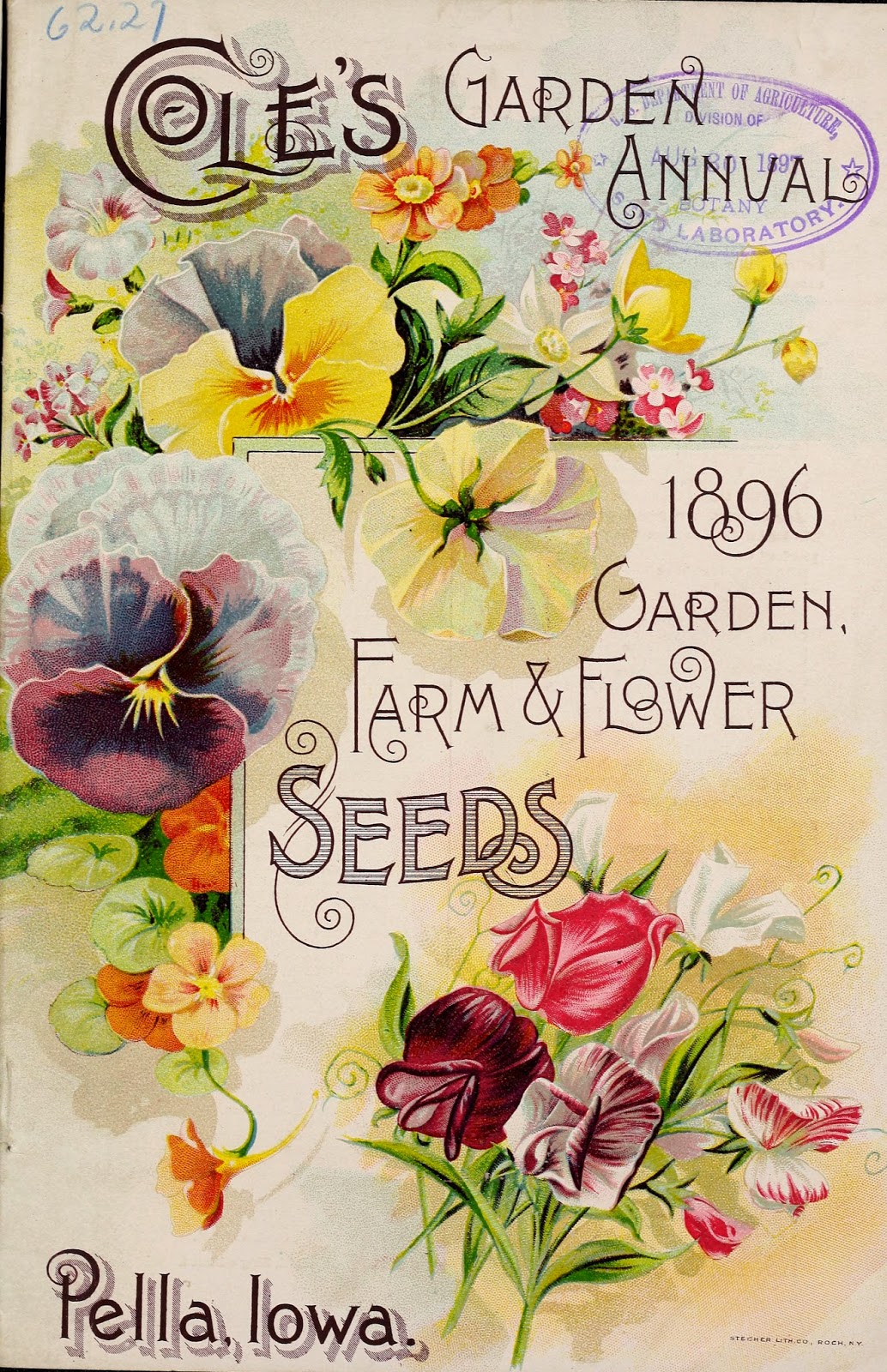 |
| Example of chromolithograph seed cover. Cole’s Garden Annual. 1896. http://biodiversitylibrary.org/page/43194611. |
Reimagining the Seed Catalog: James Vick
James Vick (1818-1882) is a figure that unites all these trends—Rochester as a horticultural center both for the selling of plants as well as printing and publishing, the use of beautiful and informative illustrations as to aid the gardening business, and landscape design education. He was another immigrant, from Portsmouth, England. After learning the printing trade in New York City, he settled in Rochester in 1837 to work for several newspapers. An intense interest in horticulture, excellent editorial skills and an innovative mind perfectly suited the Genesee Farmer and The Horticulturist (1853 to 1854). He then started his own business in 1860: the Vick Seed Company.
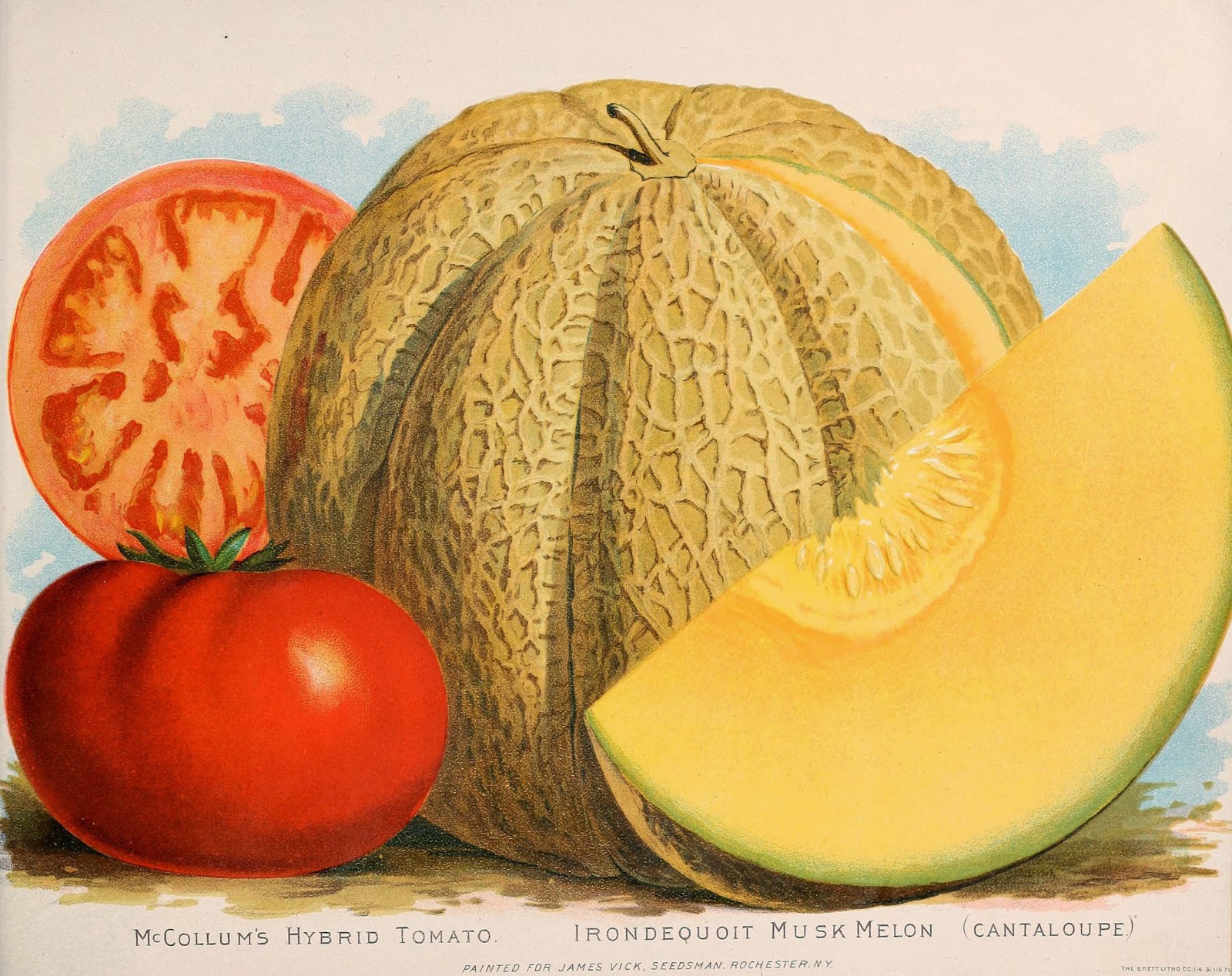 |
| Vick’s Floral Guide, 1889. McCollum’s Hybrid Tomato, Irondequoit Musk Melon chromolithograph. http://biodiversitylibrary.org/page/44438925. |
Andrew Jackson Downing’s English landscape aesthetic, laid out in the author’s A Treatise on the Theory and Practice of Landscape Gardening (1841) and Cottage Residences (1842), particularly influenced the seedman’s essays for his several annual catalogs and magazine, Vick’s Illustrated Monthly (the title varies). Vick promoted Downing’s favored picturesque style of undulating expanses of lawn, groupings of trees and shrubs, and flower in borders and beds, along curving paths. He advertised widely seeds for all these components in other publications and newspapers while integrating his own printing shop and bindery and mailing operation, with this 100-acre nursery and retail store. His sons took over the business following Vick’s death but eventually sold it to the Burpee Seed Company.
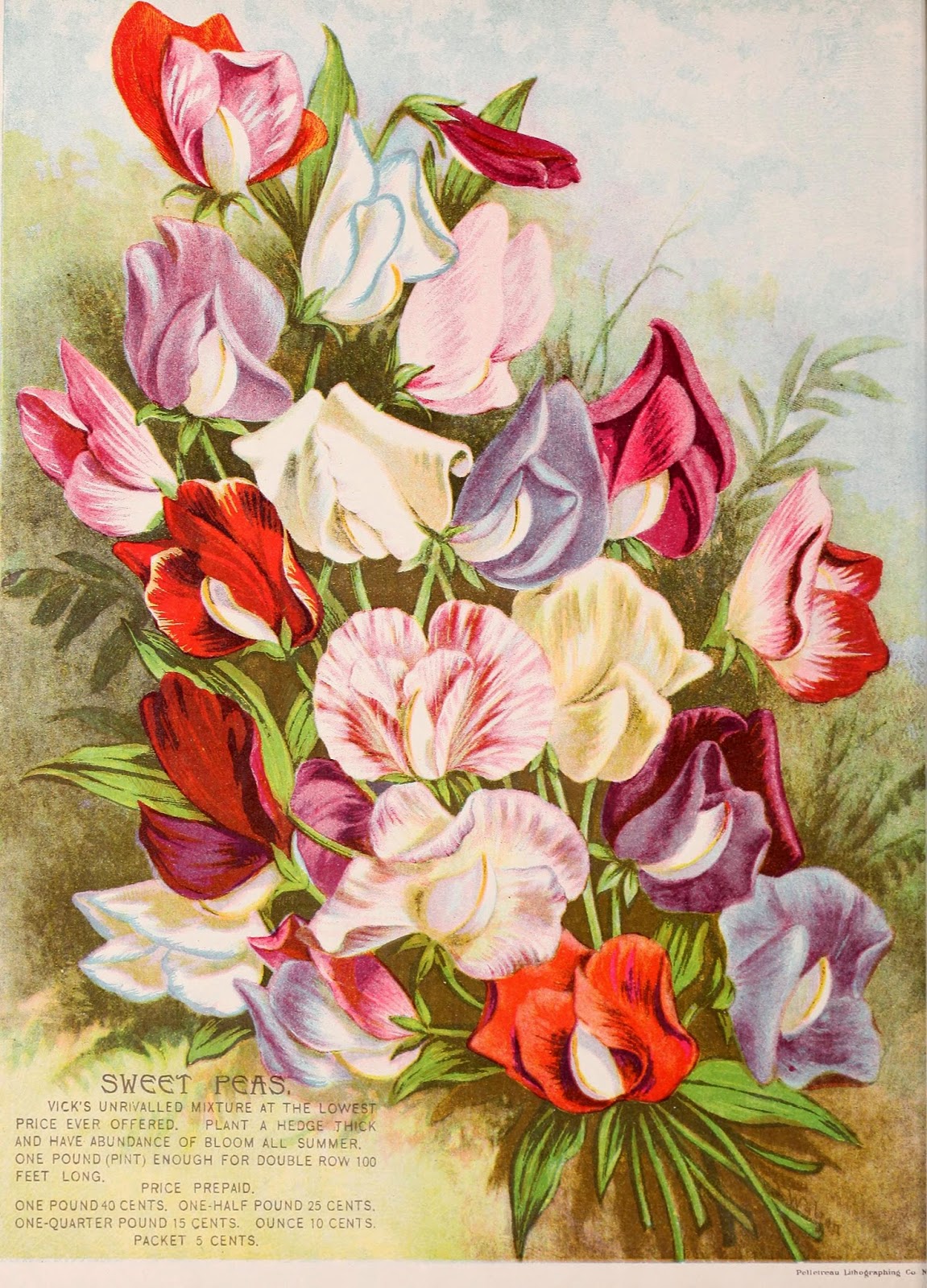 |
| Vick’s Floral Guide, 1895. Sweet Peas chromolithograph. http://biodiversitylibrary.org/page/44442935. |
As an added incentive, mail order customers of Vick’s company were sent free chromolithographic prints to display in their homes.The suitable-for-framing art and the covers of Vick’s catalogs were mostly devoted to floriculture with bold, colorful images to lure customers in the dead of winter to dream of planting and then order for planting in the spring and summer. Planning, particularly for something new and exotic, is at least half the fun.
Survivors of this ephemeral form of publication—seed and nursery trade catalogs—are valuable not only for their pictures (documenting different techniques of illustrating processes) but as research sources on introduction of plants into the trade as well as trends in horticultural fashion. Catalogs can also be used to trace the propagation history of specific plants, seed cleaning, packing and shipping methods, and prices. Or, rather than research, the illustrations can provide in this day inspiration or simple enjoyment of their aesthetic.
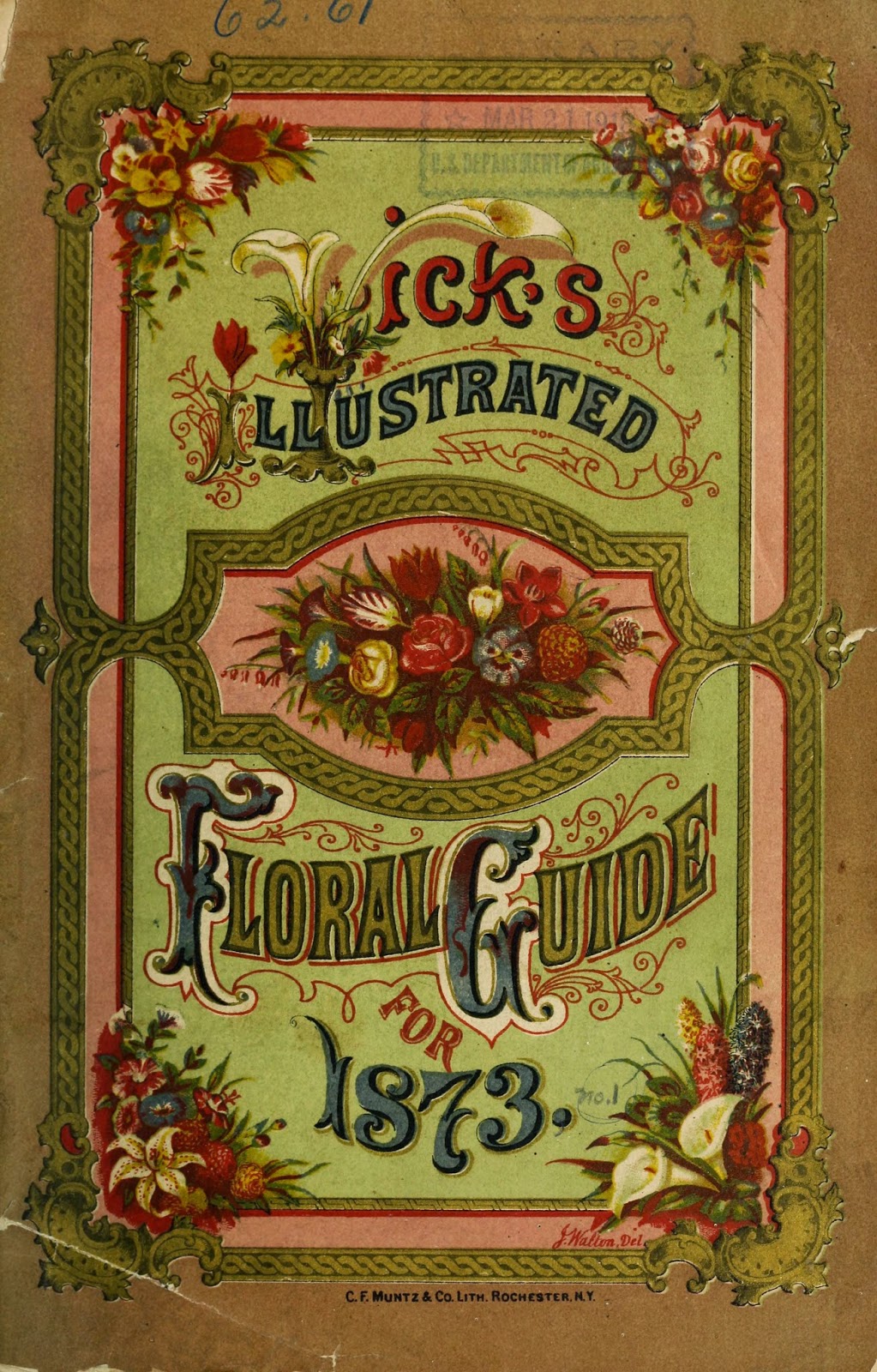 |
| Chromolithograph cover. Vick’s Illustrated Floral Guide for 1873. http://biodiversitylibrary.org/page/44383969. |
Stay Tuned for Part Two of our “Revolutionizing the Garden Industry with Art” blog post to see how photography influenced the seed catalog.
More Garden Stories Fun
- Follow our blog and #BHLinbloom on Twitter and Facebook (or go directly to BHL’s Twitter and Facebook) this week as we explore the fascinating world of gardening, from its history to plant factoids and practical gardening tips.
- Browse over 14,000 seed and nursery catalogs in our collection.
- Browse over 2,500 seed and nursery catalog images in our Flickr collection.
- Explore select seed catalog art, and stunning bookmarks and postcards developed by Cornell Library, on Pinterest.
- See historic gardening come to life on the Smithsonian Libraries’ Tumblr.
- Purchase your very own Garden Stories T-Shirt through T-Fund. All proceeds will go to help us digitize more pages for BHL. Our goal is to sell enough shirts to digitized 5,000 pages. Can you help us get there?
- Help us improve access to seed and nursery catalogs by transcribing some today as part of our the Institute of Museum and Library Services (IMLS)-funded Purposeful Gaming project!
- Find great online gardening resources, tips, and help on the BHL Gardening Resources Page.
For further reading:
- American Antiquarian Society online exhibition. “Big Business: Vick’s.” http://www.americanantiquarian.org/Exhibitions/Food/vicks.html/
- Craib, Emma. “James Vick – Marketing the Garden Dream.” http://horticultural-history.blogspot.com/2014_04_06_archive.html
- Mickey, Thomas J. “Selling the English Garden: The Nineteenth Century American Seed Merchant James Vick.” Conference on Historical Analysis and Research in Marketing, 2009, p. 186-196.
- Twyman, Michael. A History of Chromolithography: Printed Colour for All. London: British Library, 2013. Nursery Industry in Rochester: https://www.lib.rochester.edu/index.cfm?page=2409


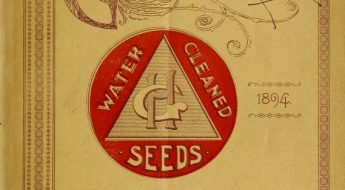


Leave a Comment